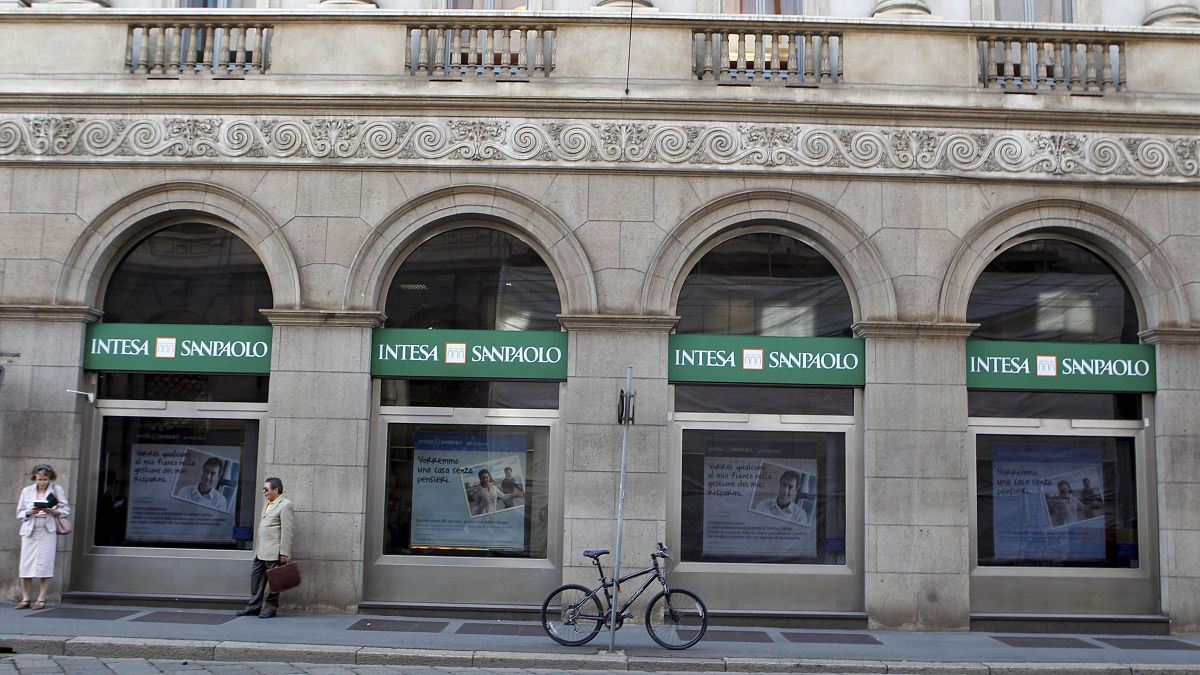Intesa Sanpaolo is to cut thousands of jobs and focus on a more resilient business model including more use of artificial intelligence and digitalisation.
Italy’s largest bank, Intesa Sanpaolo, is to cut thousands of jobs in an attempt to decrease costs and speed up the company’s digital transformation.
The cuts account for nearly 10% of the bank’s current workforce. The company says that the cuts, which are expected to happen by 2027, will be voluntary. Some 2,000 of the posts will go across the bank’s international subsidiaries, whereas 7,000 will go from jobs in Italy.
They will also include 4,000 people who will either take early retirement within the next three years, or will be able to access a solidarity fund. The bank says that the cutbacks will result in cost savings of about €500m annually from 2028 onwards.
The move has been made in an effort to solidify the sustainability of the bank’s future results, as well as further enhance a stronger business model focusing on artificial intelligence and digitalisation.
Although Intesa will incur about €350m in charges in Q4 2024 for this change, it has reassured investors that it would not be imparting the net income amount expected for the full year, which is about €8.5bn.
The company is also making some targeted hires, in line with its new strategy.
This includes hiring 3,500 young employees on indefinite-term contracts by next June, out of which 1,500 will be global advisors for network commercial activities.
Intesa Sanpaolo teams up with European Investment Bank for wind energy investment
The European Investment Bank recently announced that it would be giving Intesa Sanpaolo a €500m counter-guarantee, which will then allow the latter to make a bank guarantees portfolio worth about €1bn. Bank guarantees are promises from banks to cover a third party’s payment, if a borrower does not pay up.
In turn, this tie-up will help support the power grid interconnection and supply chain for new EU wind farm projects.
Gelsomina Vigliotti, the vice president of the European Investment Bank (EIB), said in a statement: “Wind energy is central to European energy independence. Producers are facing challenges such as high costs, uncertain demand, supply chain bottlenecks and strong international competition.
“This agreement shows how the EIB’s risk-sharing instruments help overcome these difficulties and finance key projects for the green transition and the decarbonisation of the European economy, while enhancing industrial competitiveness.”
Mauro Micillo, chief of Intesa Sanpaolo’s IMI Corporate and Investment Banking branch said: “The energy transition requires significant investments and a virtuous collaboration between public and private stakeholders. In this context, the development of renewable energies is one of the key objectives of the green strategies at national and European level.
“Thanks to many years of collaboration with the EIB, the IMI CIB Division of Intesa Sanpaolo has developed innovative instruments aimed at supporting large international groups’ infrastructure investments, including interconnections and electricity grids, enabling strategic sustainable projects in Europe.
“The recent transactions enhance our support for the entire wind energy supply chain, with a focus on ESG goals, in collaboration with our clients and the European institutions.”

